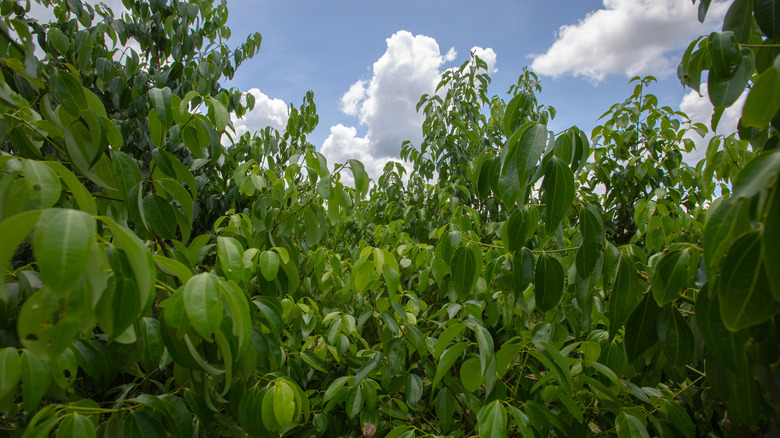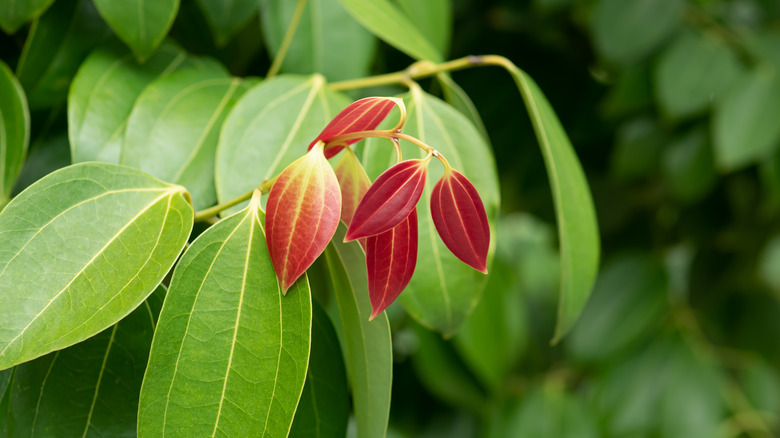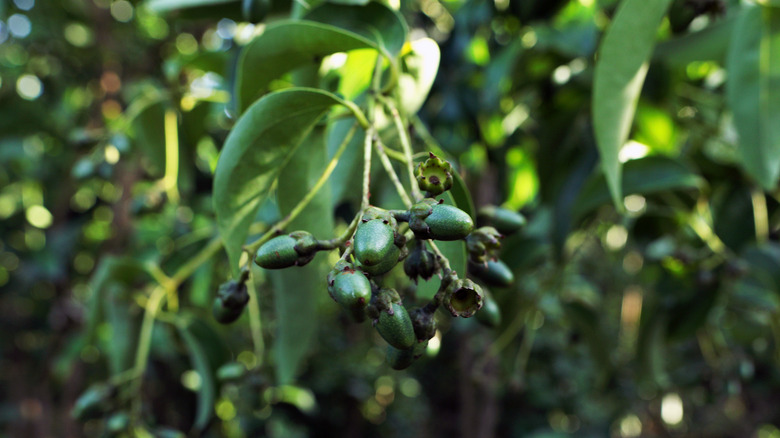Here's How To Grow A Cinnamon Tree
Cinnamon — that aromatic sensation that has infiltrated our culinary spaces and captured our affection. And would you believe that cinnamon powder moonlights as a pest and disease control agent? Surprising, right? If you wish to grow a cinnamon tree at home, rejoice, for it turns out that the plant can indeed be propagated from stem cuttings and seeds. These trees flourish in tropical climates, specifically in USDA zones 10 to 12. Regarding hydration, keep the soil moist but not too waterlogged that it causes root rot. Now, let's get down and dirty — with soil, naturally. Well-draining, 4.5 to 5.5 pH loam soil is the ideal mix for cinnamon. However, the plant is adaptable enough to endure various soil compositions.
Nurturing a cinnamon tree is like raising a child, demanding love, attention, and patience. But it's a gratifying endeavor for those fancying a spicy aroma drifting through their garden or indoors. A balanced, slow-release fertilizer applied every spring should supply all the essential nutrients while pruning suffices to preserve your plant's health and elegance. Common cinnamon tree pests are leafminers, mealybugs, cinnamon butterflies, and mites. As for diseases, root rot is the primary offender. Appropriate chemical application, watering, and pruning should help keep these issues in check.
How to grow a cinnamon tree
Bringing up a baby cinnamon plant is quite an adventure with many options. First up, seeds. For this, you will need to outsmart those sneaky birds that can't resist cinnamon fruits' charm. Once you rid the seeds of the pulp, dry them off and tuck them an inch deep in moist, potted soil while they're still fresh. Patience is key, as these little gems may take three weeks to germinate. Thin and transplant the seedlings when appropriate. And if you prefer the stem-cutting route? Slice a 6-inch cutting from a healthy, mature cinnamon plant. Then, strip off the lower leaves, dip one end in some rooting hormone, and nestle the cutting in a moist potting mix.
You could start your journey with seedlings. "But where can I buy a cinnamon tree?" you might ask. If your local nursery isn't an option, online marketplaces are at your service. Sandy loam is the crème de la crème for cinnamon trees — it's supportive and knows when to let go (drains well, to be exact). Conversely, hardpan soils and heavy clay are as incompatible with cinnamon plants as stilettos in soggy ground. But what about growing cinnamon indoors? That's a fantastic option if you live in a cold zone or want to sustain your cinnamon plant during the winter. In this case, use a well-drained, large container (18 to 24 inches wide, 20 inches deep), with well-watered potting soil mix.
How to care for a cinnamon tree
A fantastic garden tree, cinnamon cherishes a good tropical rain shower, so it's up to you to play Mother Nature during the dry season. Along with frequent irrigation, adding mulch around the tree's base will help retain moisture. Next, let's talk about food — not pizza, but fertilizer. Start with a slow-release fertilizer during the planting. Once your plant is established, treat it to a delicious feast of fertilizer every spring and fall. If you are feeling extra earthy-friendly, organic options like compost, poultry manure, or even dead cinnamon leaves will do the trick. These plants do well with at least six hours of direct sunlight daily. Houseplants should be placed in a sun-drenched room or near a south-facing window. And when the sun goes into hiding? Full-spectrum LED grow lights can save the day.
You'll want to watch out for stripe canker, blight, leaf spot, pink disease, and brown root rot, and safely remove and discard any affected sections. A complementary measure is treating the problem areas with fungicides. As for pest control, choose solutions tailored to eliminate the critters and their eggs. Trimming helps tidy up your cinnamon tree, foster airflow and light penetration, and keep pests and diseases at bay — simply snip away congested shoots and leaves that look yellow, dead, or damaged. You'll know it's time to collect your cinnamon bounty when the bark is a lovely shade of brown (about two years after propagation).


